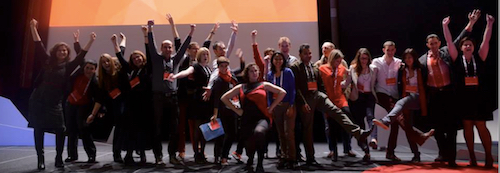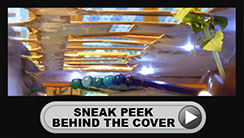
A TED talk is all about sharing an inspiring idea. It sounds easy enough, but it is more difficult than you might think.
I speak from experience - having coached speakers for several TEDx events in Geneva and Lausanne and having been called in twice to salvage someone's TED talk within days of the event.
So when I was asked by the UN to coach 9 speakers for their PlacedesNationsWomen event one of the first things I did was to write a guide on what makes a TED talk different from the usual presentation or keynote address.
Here are my tips on drafting a TED talk, based on my experience as a professional public speaker and coach and the wonderful book
"TED Talks - The Official TED Guide to Public Speaking". by the head of TED Chris Anderson.
- Make it personal: As a speaker, talk about an idea that matters deeply to you and transmit the idea and the passion you feel about it to your audience. It has to be an idea worth sharing!
- Know the audience: Think of yourself as a tour guide taking the audience on a journey to a new place. You need to begin where the audience is and steer them clearly and compellingly along the way.
- Stick with your idea: Think of your talk as about an idea rather than an issue. This is particularly important if you are tackling a tough topic where compassion fatigue can easily set in. An issue-based talk leads with morality. An idea based talk leads with curiosity. It says, "isn't this interesting?" rather than "isn't this terrible?" For example, this is an issue: Education for all. An idea would be framed as "Education's potential is transformed if you focus on the amazing (and hilarious) creativity of kids.
- Connect the dots: You need a connecting theme, which ties together each narrative element. It is the idea that you want to construct in the minds of the audience. Can you put this in no more than 15 words?
- Make it memorable: Think about the three points/messages that you want the audience to remember when they leave the room. Studies show people rarely remember more than three points and recall drops dramatically the day after.
The structure
Choose a structure that most powerfully develops your connecting theme. See below some suggestions, which can be mixed and matched over the talk.
- Personal journey: If you are sharing your personal journey then you may want to follow the classic "hero's journey" structure where you have a goal but meet challenges along the way which you overcome and resolve the best you can.
- Persuade: If you want to persuade an audience that the way they currently see the world isn't quite right, you will want to guide them through your argument so that is it plausible. This means breaking down your argument logically into small steps, perhaps even taking the counter position to show that it is flawed.
- Detective: Another way to build a persuasive case is to play detective. You start with a puzzle and then with the audience search for solutions, ruling them out one by one. You invite the audience on a process of discovery and this can work well if you are a scientist or researcher talking about a discovery you have made.
- Aspirational: You may want to speak of the world not as it is, but as it might be. You paint a picture of the alternative future you want and compare and contrast it with the situation today. (Think Martin Luther King, "I have a dream".)

Techniques to make your talk memorable
- Open with impact. Within the first minute, you need to get the audience's attention, make them curious and excited. Here are some ways to start.
1) A surprising statement, fact or statistic.
2) A surprising rhetorical question
3) Show a compelling slide, video or object
4) A personal story or anecdote
You want to tease, but don't give away your punch line. If you are looking to persuade or reveal a discovery you want to build up to your revelation.
- Close with impact.
1) Move from the specific to the broad
2) Call to action - invite people to take action on your idea.
3) Personal commitment - make a commitment of your own.
4) Values and vision - can you turn what you have discussed into an inspiring or hopeful vision of what might be?
5) Narrative symmetry - the human brain likes balance so you may want to link back to your beginning so that the narrative comes full circle.
In my next blogs, I shall take you through how to align delivery and content as well as lessons learnt from my TED journey.
Author's bio
 Claire is a former BBC correspondent and international spokeswoman who is passionate about helping people communicate with confidence. Since 2006, she has successfully trained hundreds of professionals in the art of presenting and public speaking, talking to the media, managing communications in a crisis, and writing for the web. In addition, she has coached C-level executives and public figures to give powerful TEDx and TED style talks in Europe and the Middle East. A Swiss and UK national, Claire trains and coaches in French and English.
Claire is a former BBC correspondent and international spokeswoman who is passionate about helping people communicate with confidence. Since 2006, she has successfully trained hundreds of professionals in the art of presenting and public speaking, talking to the media, managing communications in a crisis, and writing for the web. In addition, she has coached C-level executives and public figures to give powerful TEDx and TED style talks in Europe and the Middle East. A Swiss and UK national, Claire trains and coaches in French and English.
Claire is also a highly experienced moderator having facilitated panel discussions with government ministers, NGO activists, humanitarians and human rights specialists at major events.







